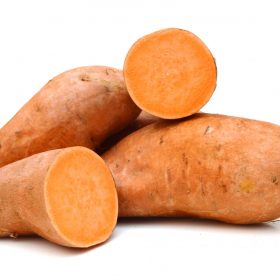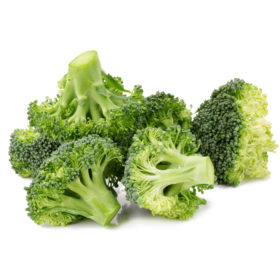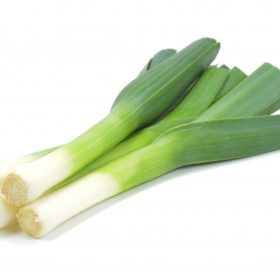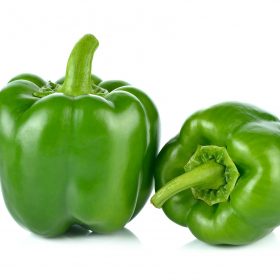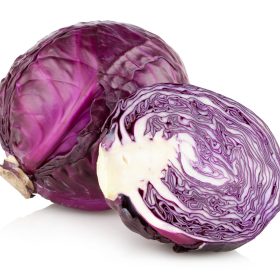These days we might be making fewer trips to the supermarket than we once did, and yet it’s still important to keep eating plenty of immune-boosting veggies. The good news is some of our favourite veg can stay fresh for a long time after we’ve got them home, as long as they are stored correctly. Knowing a few tricks to help your veg stay crisp, firm and fresh means you can relax and make things last until you next go shopping. We’ve paired our top five long-lasting veggies with some quick tips to help you pick the best of the bunch, and keep them fresh for as long as possible.
Naturally long-lasting vegetables
It’s easy to store vegetables that don’t go off quickly. Veg like onions, garlic, butternut squash and the humble potato will keep for months in a cool, dry, dark place. These vegetables look after themselves because they have thick rind or skin that keep the moisture in and keeps them crisp. More tender veg, however, are a different matter, and here’s why…
Why your veg goes from good to bad
Fresh vegetables contain 65% to 95% water when harvested. In storage this water starts to evaporate in a process called ‘transpiration’, which is why old carrots look shrivelled!
All fruits and vegetables contain a natural gas called ethylene which is there to help them ripen. Some fruit and veg give off more of this gas than others, like bananas for example – think of the age-old trick of using bananas in a paper bag to ripen other fruit and veg! However, ethylene keeps on working long after the fruit or veg has reached its peak and will eventually make fresh produce become overripe and then start to go bad.
Storing vegetables at home
There are four things to consider:
- Inside the fridge or out? While tender veg are best off in the fridge, some vegetables are sensitive to the low temperatures and moisture of the refrigerator. The starch in potatoes will tend to turn to sugar when kept in the fridge, and garlic and onions start to sprout green tops. Root vegetables, squashes, onions and garlic are best kept on the dry side and stored outside the fridge in a cardboard box or paper bag – not plastic – to keep air circulating.
- Containers for the fridge: While tender and delicate veg like salad need the fridge, balancing moisture levels and good air circulation is the key to keeping things fresh. Place veg in the crisper box and use perforated bags to increase air flow. A paper towel popped into the bag will help wick moisture and prevent rot while keeping your fruit and veg firm. Don’t use fully-sealed bags because this will trap ethylene and speed up over-ripening.
- Find the right temperature: Keep your fridge around 5°C and don’t let your fridge drop below 0°C. Freezing temperatures will damage your vegetables making them discoloured, develop sunken spots, or rot quicker.
- Pick out any bad veg: One role of the skin of a vegetable is to protect it against disease. Bruised or damaged vegetables should be used as soon as possible, as the rotten area may become a source for bacterial growth. If they are too far gone, throw them away or compost them. It is important to remember any vegetables stored improperly could lead to food poisoning.
Our Top Five Picks
Most people will think hearty root veg, squashes and potatoes are the vegetables that keep the longest. While this is true, there is also other produce that can be kept in storage. Here’s our pick of the longer keeping veg and some fantastic cooking tips too!
- Sweet potato – These hearty vegetables can last up to two to three months in storage. Like regular potatoes, they can be stored out of the fridge in a box in a cool pantry or kitchen corner. When choosing sweet potatoes at the shops, choose ones with firm tapered ends. If the end feels like it has started to go soft then it’s an indication that the potato is old.
Sweet potatoes are an incredibly versatile vegetable. Use them as a straight swap for regular potatoes as mash, jackets or fries. Roast them in chunks to add to curries, casseroles or salads. They also make a delicious soup. Try adding a tin of coconut milk and a little Everyday Caribbean seasoning to your next sweet potato soup for a spicy twist.
- Broccoli – Always pick the firmest broccoli you can find in the shops. A trick to extend the life of broccoli is to trim off the end of the stem and submerge the stem in iced water, then store the whole vegetable (including the container with the water) in the fridge loosely covered with a plastic bag. Try not to wash the floret part of the broccoli before storing as this encourages bacteria that can rot the florets.
Always a favourite side veg, try it roasted with lemon and garlic for a change. Broccoli is perfect in a stir fry: for a quick and easy meal, fry your broccoli with garlic, ginger, sesame oil and soy sauce, add cooked tofu and noodles and stir well. Simple and delicious! Don’t forget to use the stalk too, slice finely and add to your stir fry or grate it up and add to coleslaw or salad.
- Leeks – Although leeks, like onions, can be stored in a cool dry place, leeks often contain soil which can be a risk for E.coli and so refrigeration is best. It is a good idea to store them in a separate non-perforated bag (to catch any soil) and add a paper towel or sheet of kitchen roll to control moisture. It is impractical to wash leeks before storage and so they should be washed thoroughly before use to remove any traces of soil, especially inside the sheaths.
Chargrilling leeks will add a smoky flavour and bring out the natural sweetness. This works well on a BBQ too. Brush chunky leek slices with a little oil and season with salt and pepper first. The chargrilled slices are delicious on their own or added to quiches or risotto.
- Green pepper – As these are unripe peppers, they will last longer than the yellow and red ones, typically around two to three weeks. Store your peppers whole in the vegetable container. Once they are cut, they will quickly dry out and only last two to three days.
Green peppers are a little more bitter than red or yellow ones so best to use them in cooked dishes. They are great roasted and added to pasta sauces or try stuffing them with veggie mince and cheese for a lovely main meal.
- Red cabbage – Cabbage can be stored in the fridge, but also a cool storeroom or storage cellar for up to two months. You don’t need to wash cabbage before storing.
Braised red cabbage is a classic dish that can be cooked in bulk and reheated when you need it: add a few apple slices for extra sweetness. Red cabbage makes a wonderfully colourful slaw too: just mix with grated carrot, sliced onion and mayo. If you have a bit more time on your hands set some aside to pickle with your favourite pickling liquor. For a healthy snack, toss a few smaller leaves in a little oil, salt and pepper and cook in the oven on a very low heat for around and hour until crispy.


